Technical University of Braunschweig – Study Pavilion
The Study Pavilion at the Technical University of Braunschweig is a new campus building designed to provide flexible student workspaces by Gustav Düsing and Max Hacke | Büro Hacke.
The post-pandemic academic world is subject to constant change, and the new Study Pavilion offers answers to the question of what the role of the university campus can be in the future when lectures and presentations take place in the digital realm and AI challenges classical learning models.
The Study Pavilion of the Technical University of Braunschweig is an innovative two-story campus building designed to provide student workspaces for all faculties. Located on the central campus directly by the Oker river, the building forms a new urban landmark at the main axis along the Audimax, the historic main building, and the forum square and thus integrates into the existing pathways of the campus.
The aim was to create a multifunctional and accessible space for all students, offering a new contemporary learning environment that complements the existing campus typologies. The result is an open-space concept that supports a variety of activities and provides a flexible environment for group work, seminars, lectures, or relaxation.
The building is designed to be completely hierarchy-free, promoting interpersonal communication and interdisciplinary knowledge generation among students and faculty alike. It is intended as a counter-model to spaces of one-sided knowledge transfer, such as lecture halls.
The structure provides the basis for all activities and offers maximum freedom to students in its use. To create a sense of community that transcends individual subjects, the goal was to create a space that is consistently equal, with no traffic areas or spatial separation between floors. Zones were developed instead of fixed walls, accessed via their own stairs and entrances, creating different areas that invite different activities. From double-height clearings to intimate retreat areas and presentation spaces.
The Student House is also characterized by a fully glazed facade that offers excellent daylight quality for all areas and seamlessly connects the interior and exterior spaces. Sound-absorbing curtains, carpet, and acoustic ceilings provide a pleasant room acoustic that allows for a conversational atmosphere.
The building‘s organizational principle follows the idea of the superstructure, allowing for a constant reconfiguration of the floor plan. This flexibility in layout makes the building ephemeral and responsive, so that it remains relevant as a new campus element for a long time. The innovative steel-wood hybrid construction is completely demountable and follows the principle of “design for dissassembly”.
The primary support structure, consisting of beams and columns, is modular and designed on a square 3 × 3m grid, composed of the same 10 × 10cm square hollow profile. The wooden ribbed decks inserted into the beam frames are only bolted at points, the facade is not glued and is also demountable. In addition to possible densification through the addition of further platforms, the building could also be re-built in a different form or at a different location, following the principle of the “future material depot”, in which not only building materials can be reused but entire architectural elements such as facade-panels, stairs and platforms find new use in the spirit of “circular building”.
The energy concept is based on a district heating supply from 80% renewable energy sources, combined with ground probes for summer cooling. The 3m deep arcade with a canopy and balconies shades the facade in summer and, at the same time, generates solar heat gain when the sun is low in winter and the trees have no leaves. The up to 200 students working on laptops additionally provide passive heat gain. The building is naturally ventilated via tilt windows and a central skylight dome.
The sockets, lighting on the upper floor, and the necessary cable routing are integrated into the hollow section columns and beams.
Design: Gustav Düsing and Max Hacke | Büro Hacke
Contractor: Cornils
Photography: Iwan Baan, Leonhard Clemens, Lemmart

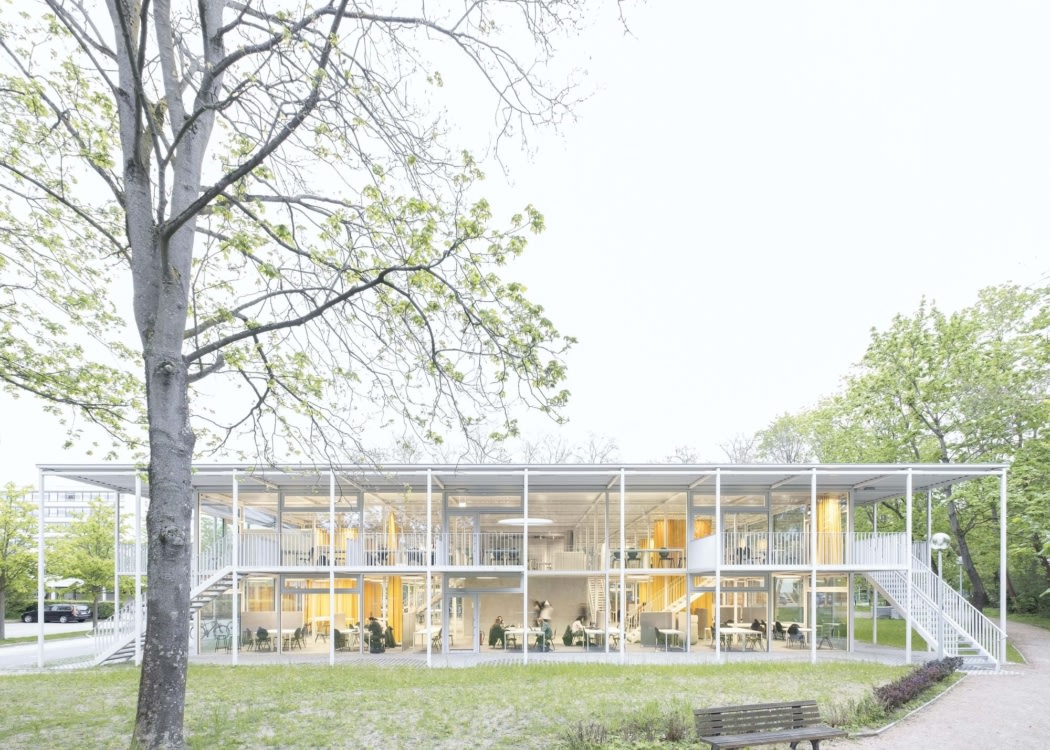
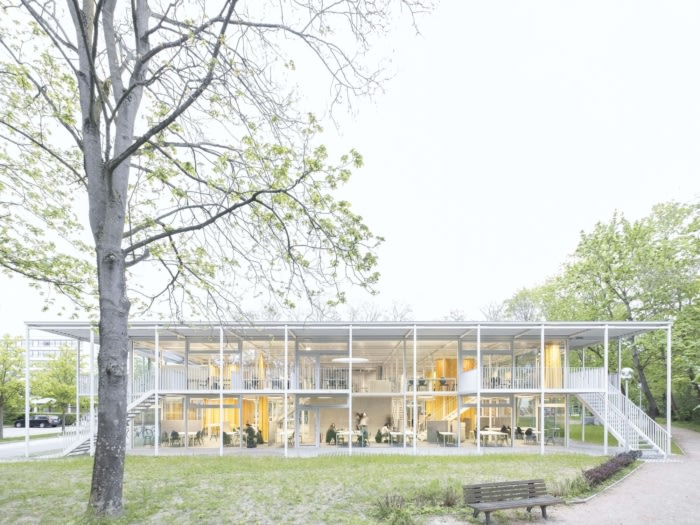
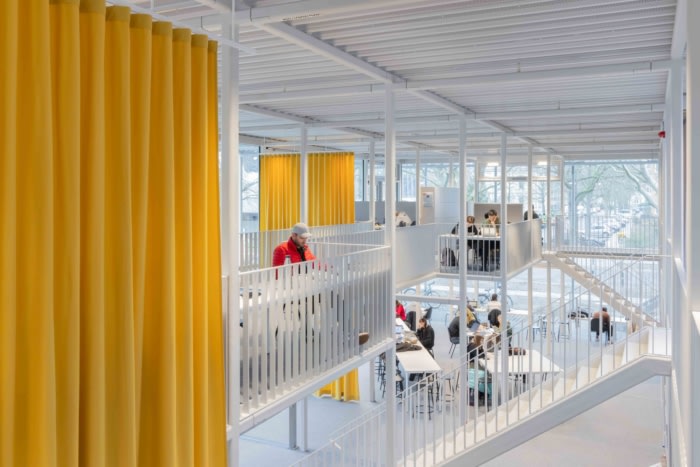
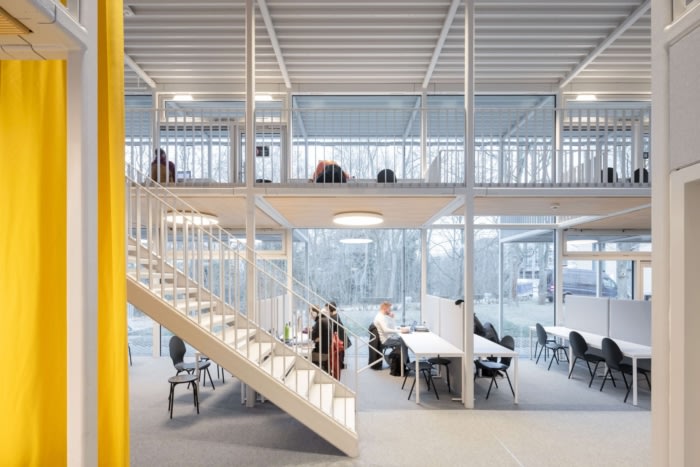
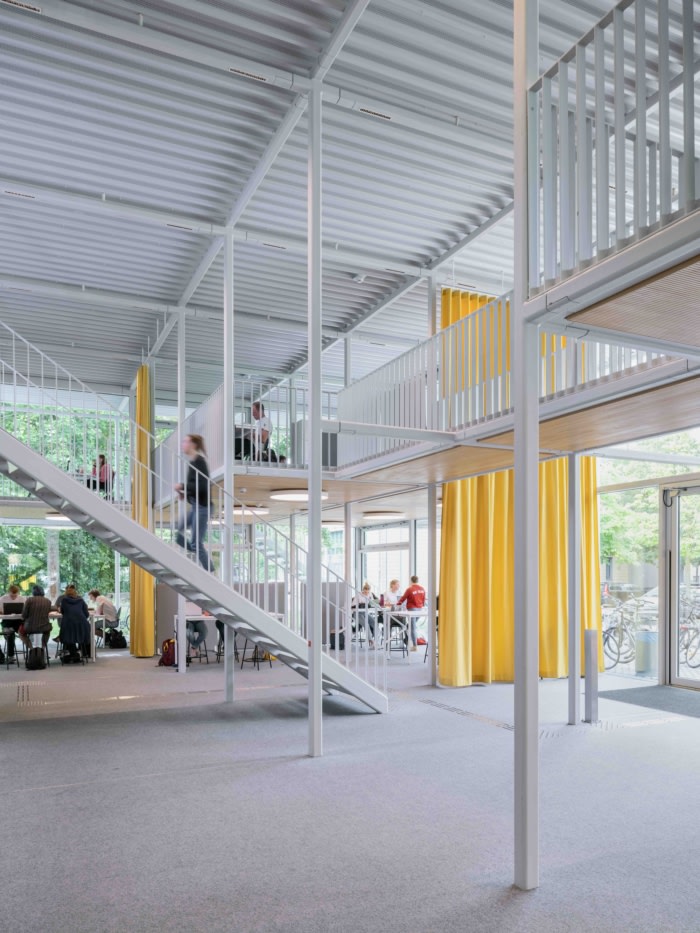

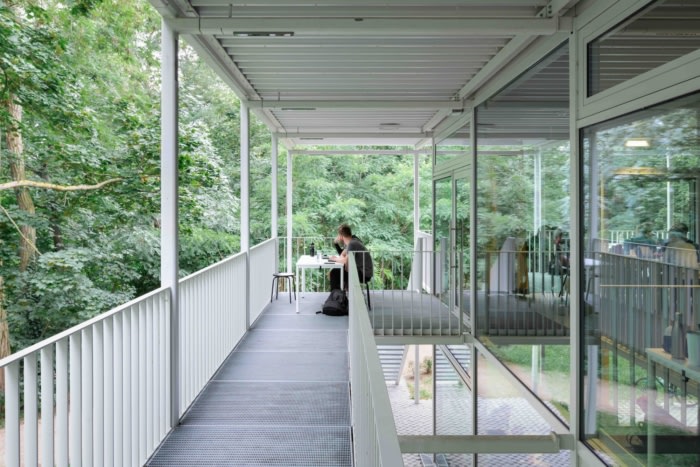



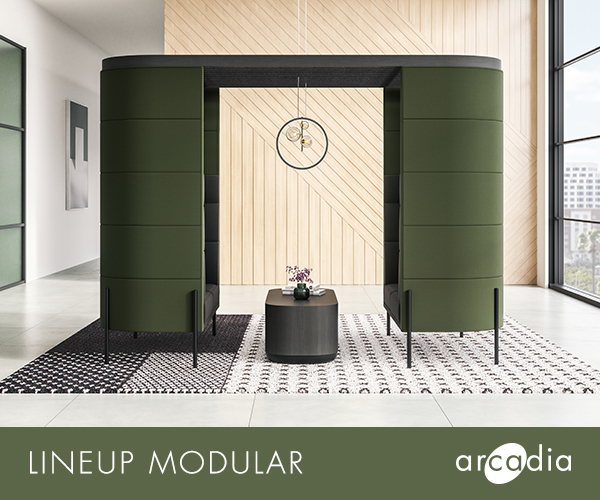
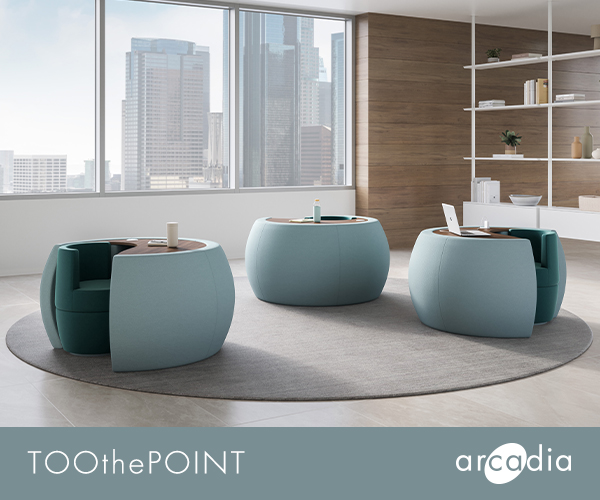




Now editing content for LinkedIn.